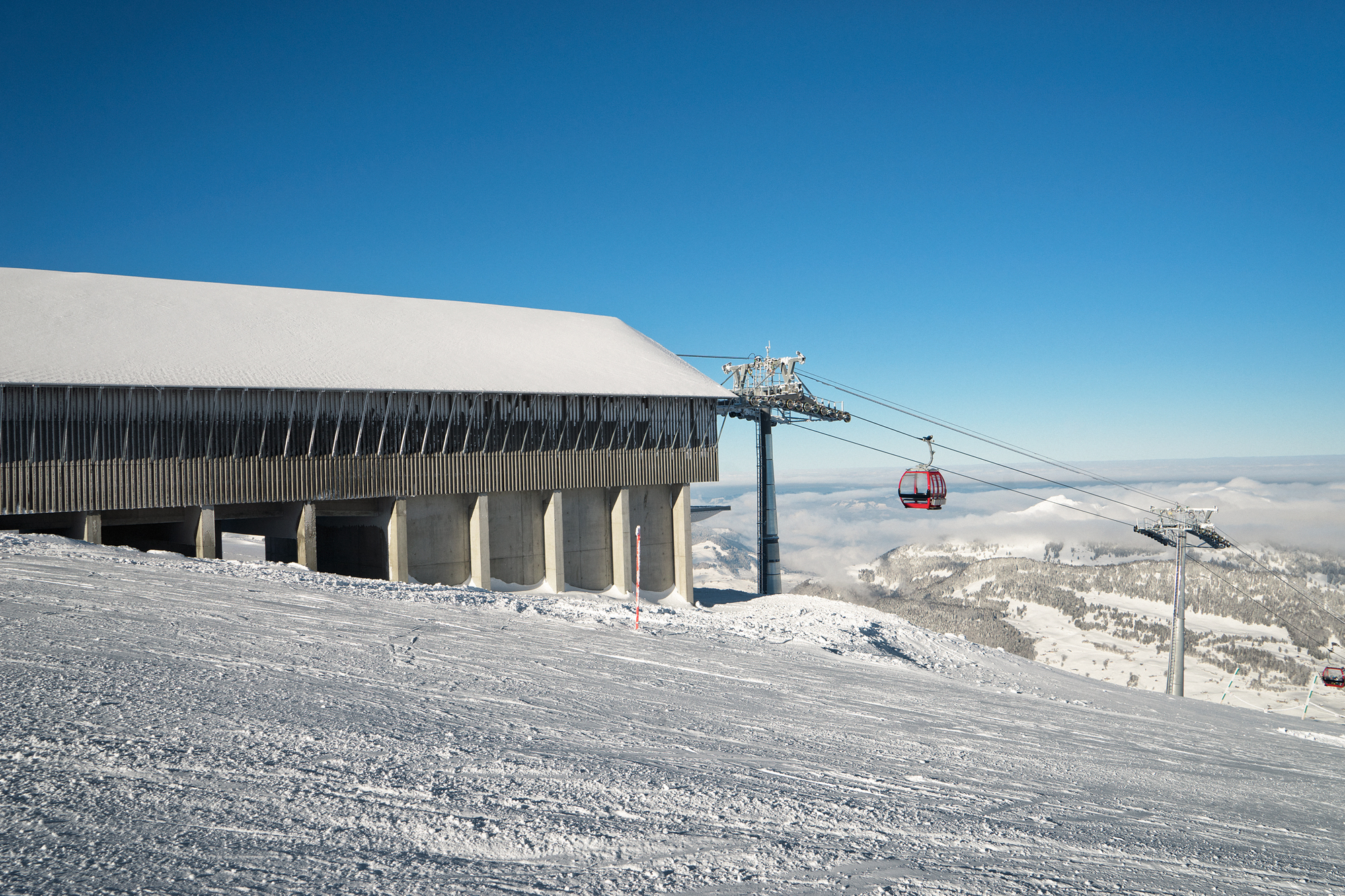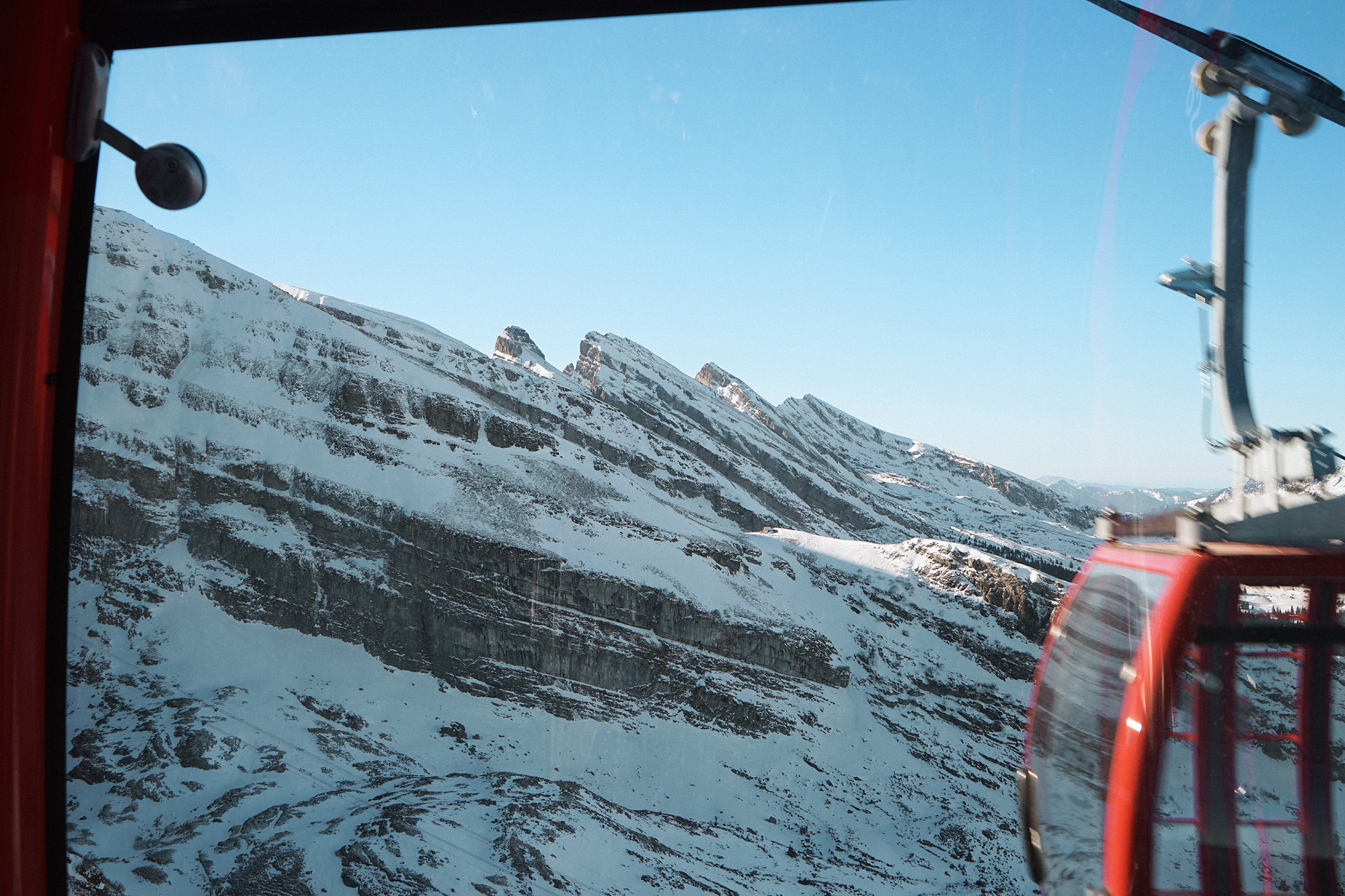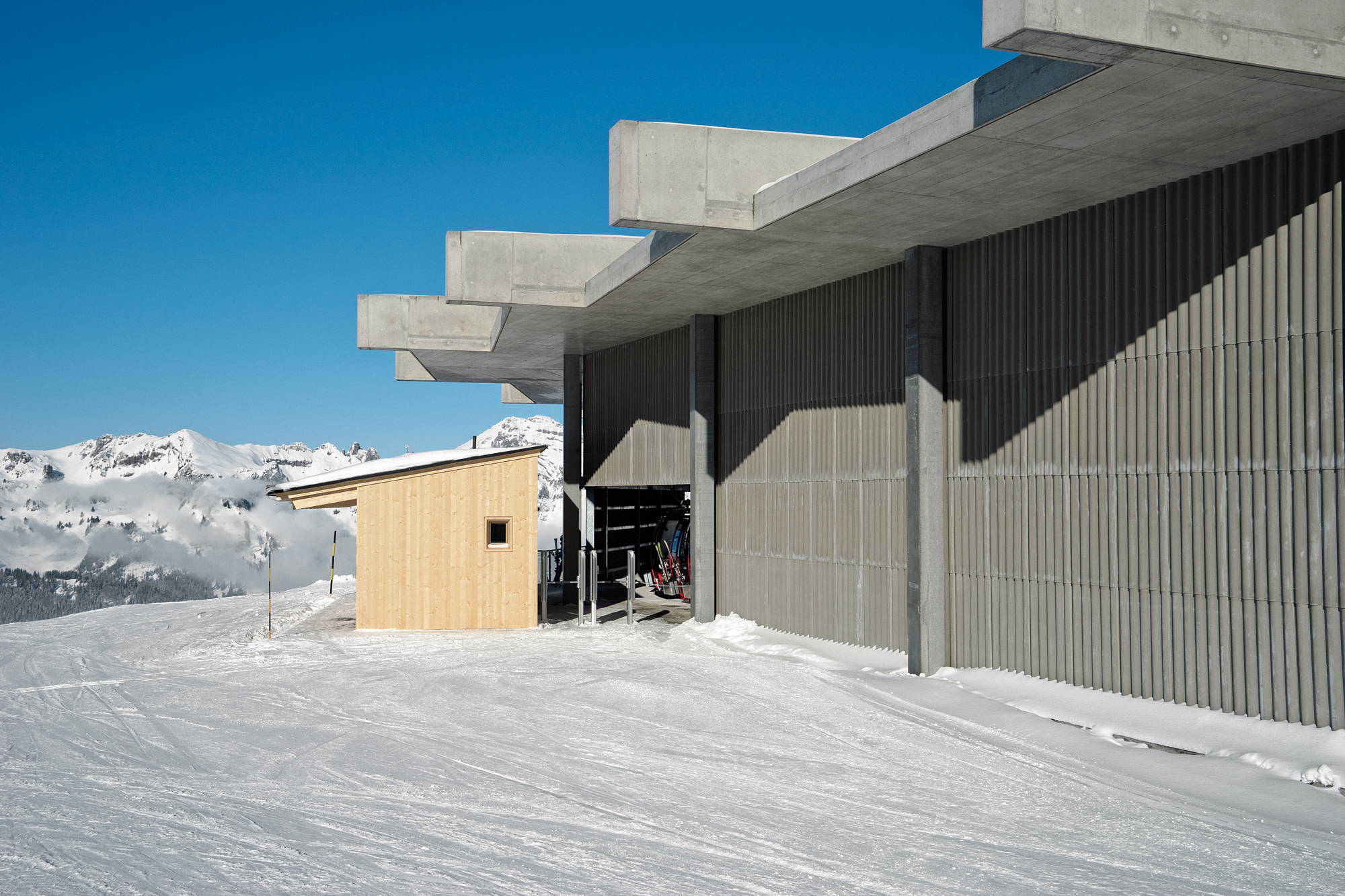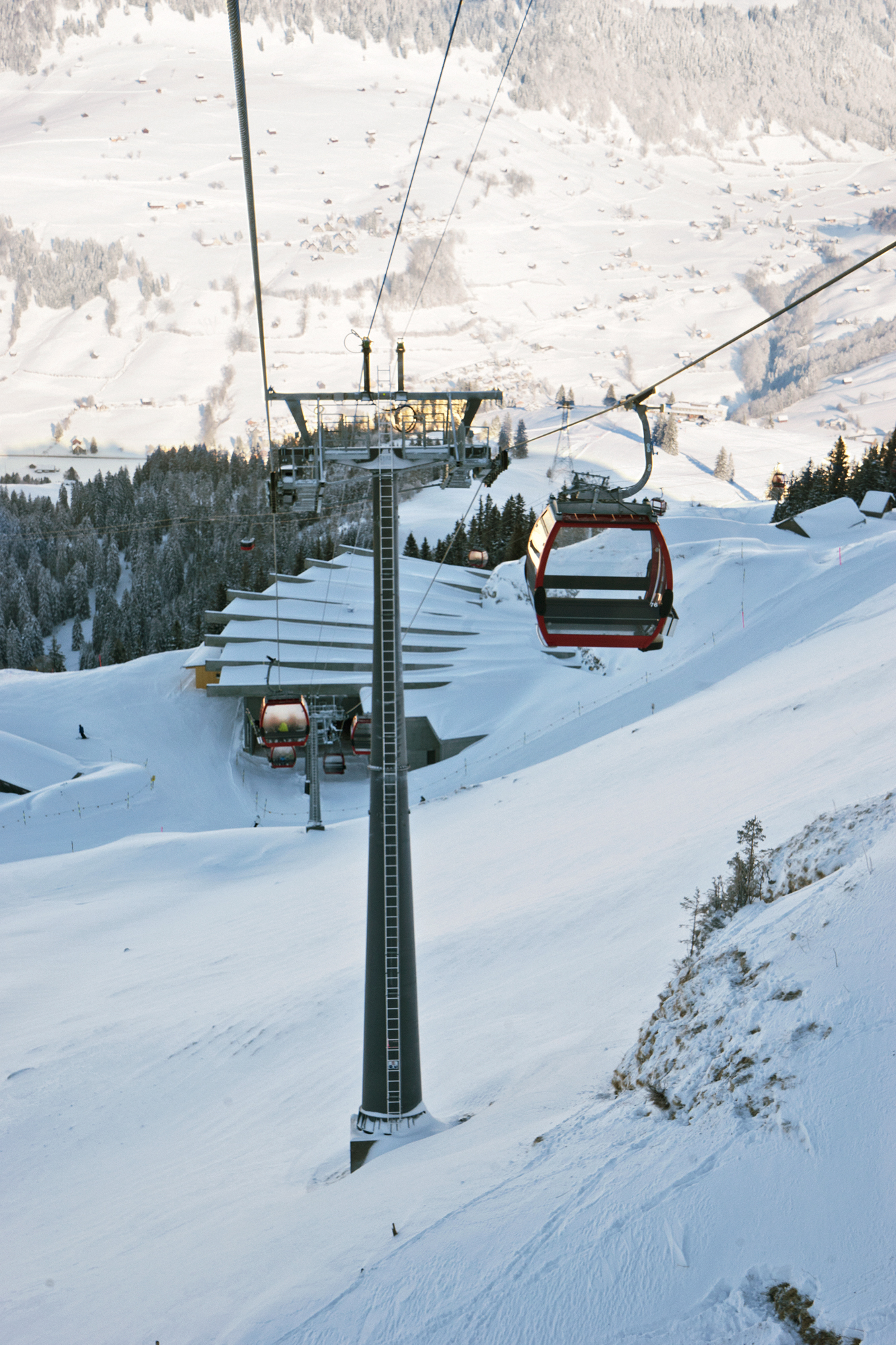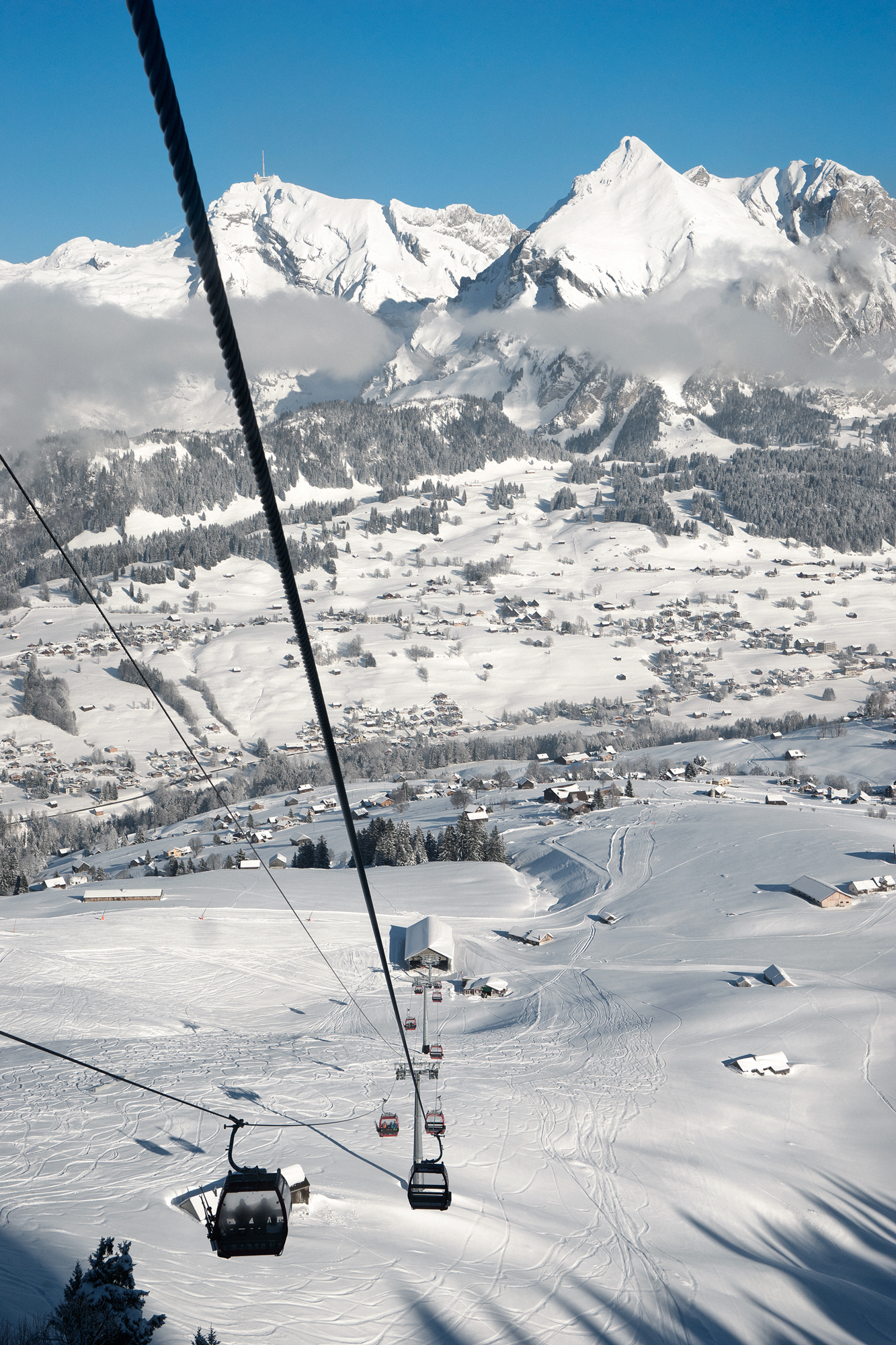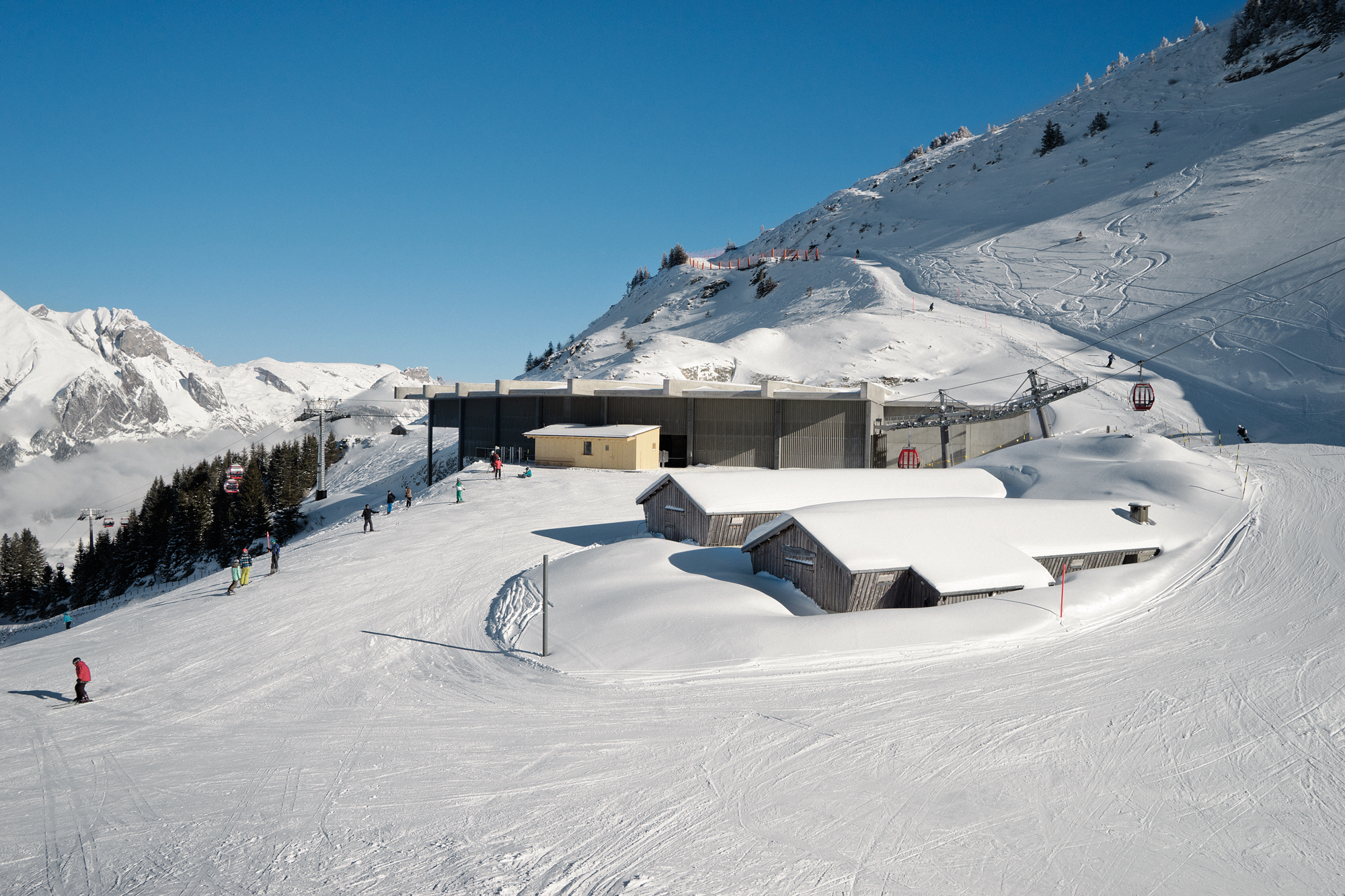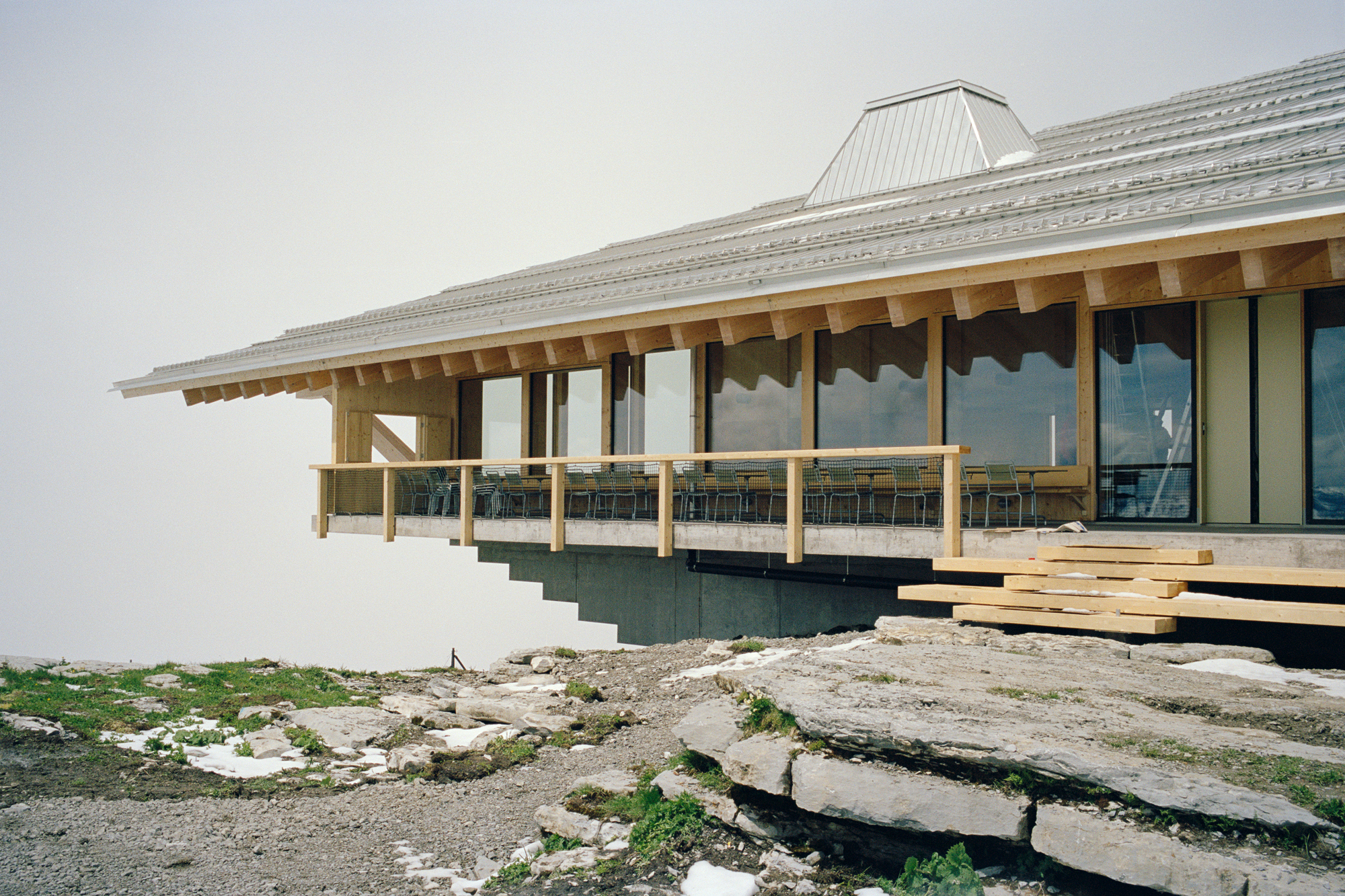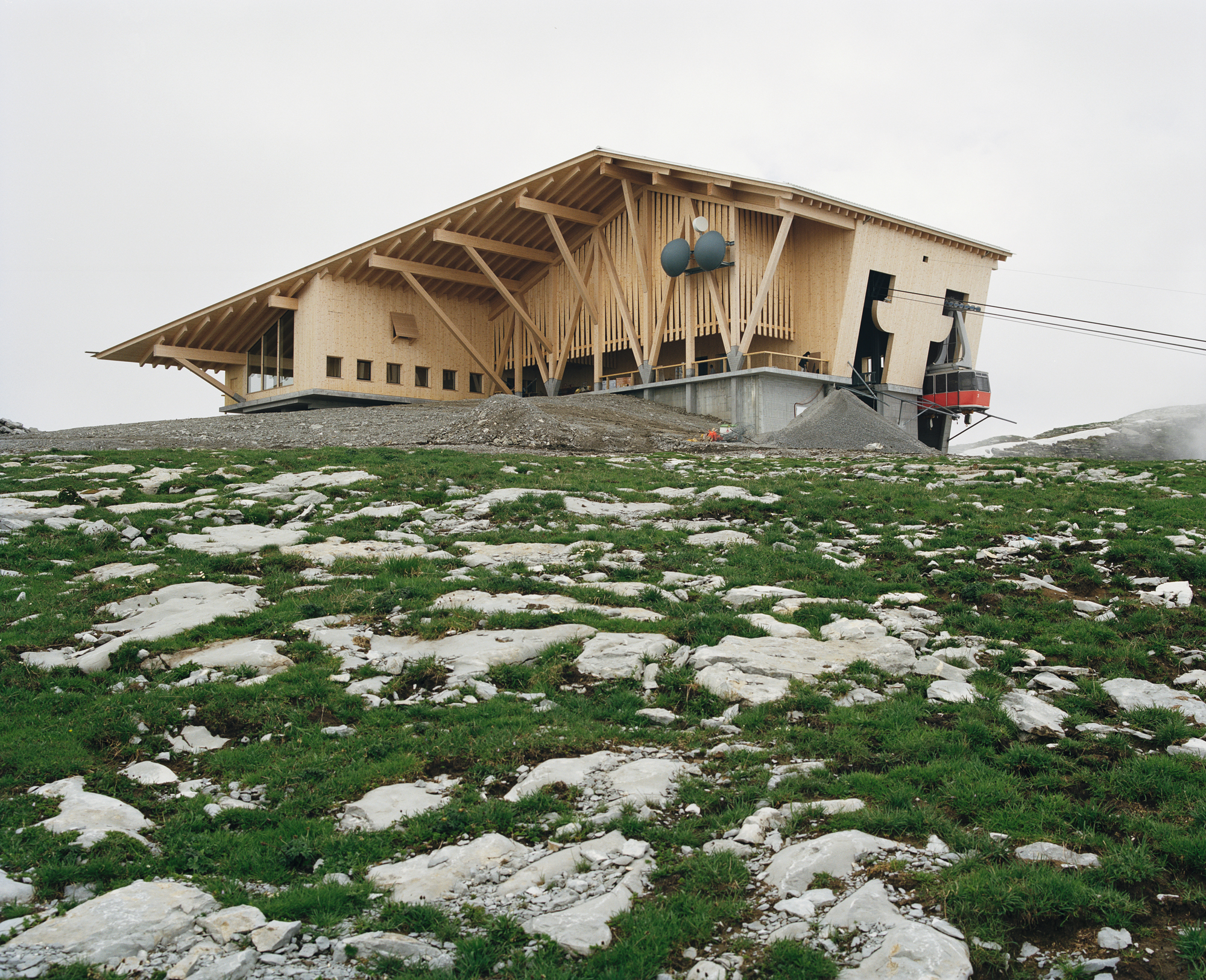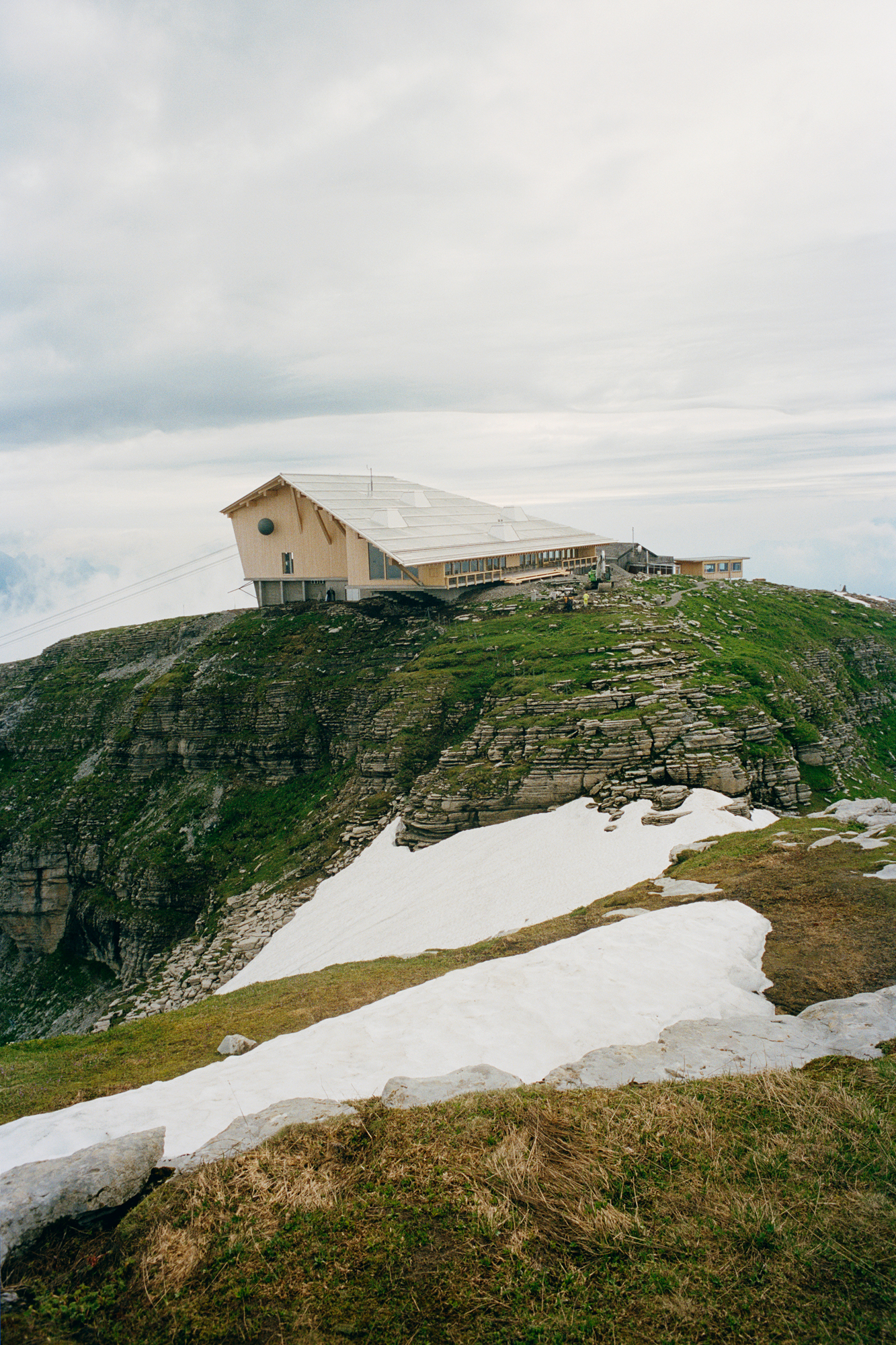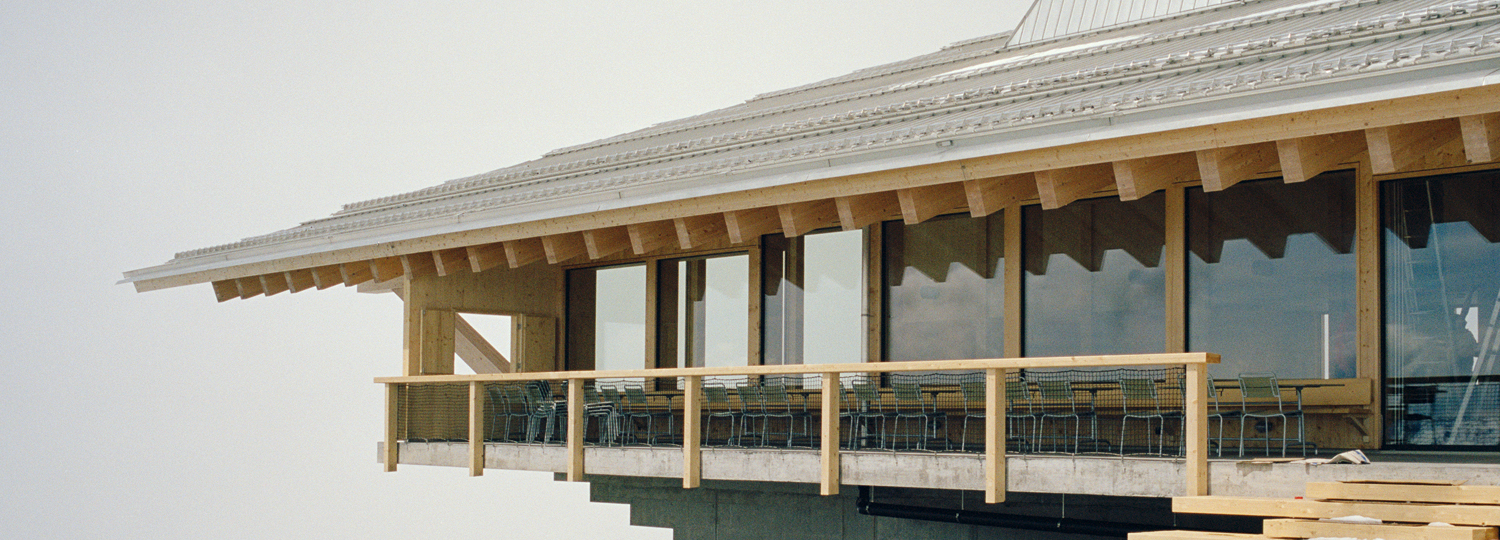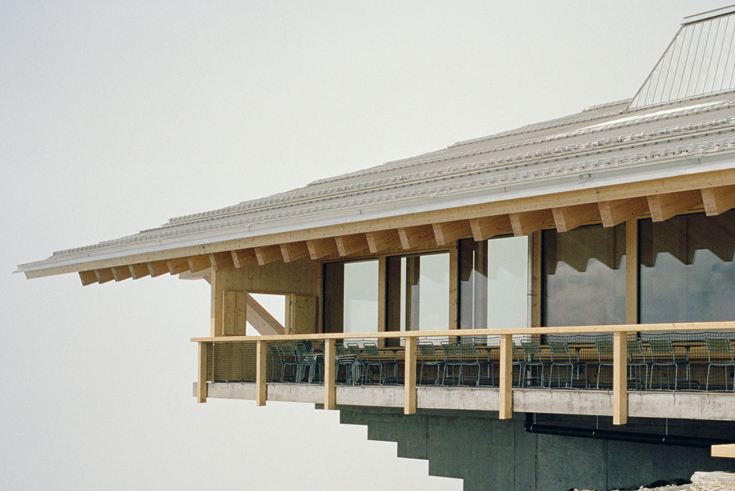Chäserrugg – The Height of Modesty?

Photo: Katalin Deér
James Bond or Heidi?
Even stay-at-home types who have never set foot near the mountains have a clear image of a Swiss summit station: it looks exactly like the dramatic Piz Gloria, headquarters of villain Blofeld in the 1969 Bond classic On Her Majesty’s Secret Service. Today, it is still possible to follow 007 to the original setting: the Schilthorn, which stands 3,000 metres high.
The crest of the Chäserrugg enjoys no such fame. However, at 2,262 metres, it reigns as one of seven princes above the Rhine Valley and Lake Walenstadt. Year-round, this terrain offers the possibility to take part in many mountain sports. Unfortunately, the T-bar operated only in the wintertime. Ultimately, long waiting times and poky, unattractive rest stops had brought the lifts to the limit of their profitability.
In two building phases, the operators have now improved the rest area and hope to engender an economic upswing in the entire valley. The old summit station, a 1972 construction belonging to the Unterwaswer-Iltios-Chäserrugg cable-car route, and the undersized restaurant were taken down. In the same place, but turned 90 degrees, a new mountaintop restaurant has been built using a prefabricated wooden construction. The summit station has been integrated under the same roof. The glazed length of the generous dining area now overlooks the panorama. At the end of January 2016, the new cable car from the other side of the mountain, the Espel-Stöfeli-Chäserrugg Cable Car, was opened. Its 10 gondolas have replaced the old T-bar lifts.
A New, Restrained Attitude
The clients developed both projects concurrently with Herzog & de Meuron. But spectacular, futuristic architecture à la James Bond was not required here. Rather, the architectural language and choice of materials give a nod to the simple typologies of local barns and cabins. This sets the Chäserrugg summit restaurant and the Stöfeli cable car alongside other archaic buildings such as Long Island’s Parrish Art Museum (2012), the Arena do Morro in the Brazilian city of Natal (2014), the Slow Food Pavilion at Milan’s EXPO 2015 and the Unterlinden Museum in Colmar (2016).
The steel constructions of the summit and valley stations rest on reinforced concrete foundations. In the Espels valley station, the floor plate has been raised just a bit above the ground. At the Chäserrugg summit station, snow-grooming vehicles can be parked in the elevated concrete base. The grey fibre-cement shingles on the hipped roofs and the corrugated panels, made of the same material, on the façades of both structures call to mind old, weather-beaten wooden barns.
For the Stöfeli stopover, which lies at the edge of an avalanche slope, the architects chose the typology of simple avalanche barriers. The cable car’s change of direction is outlined in the fan shape of the reinforced-concrete supporting structure. The 78 gondolas can be parked here; the lower storey is home to the operations centre and other technical rooms.
The summit restaurant has maintained its gruff, 1970s-style charm despite all efforts at restraint such as the bare exposed-concrete foundation platform. Moreover, all attempts to remain true to the local landscape cannot conceal the boldness of the jutting platform, which overlooks a chasm. There is a touch of James Bond in every architect who dares to build on a mountain peak.
